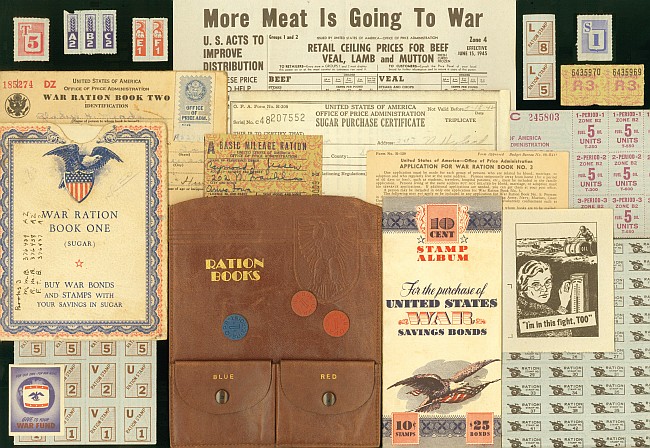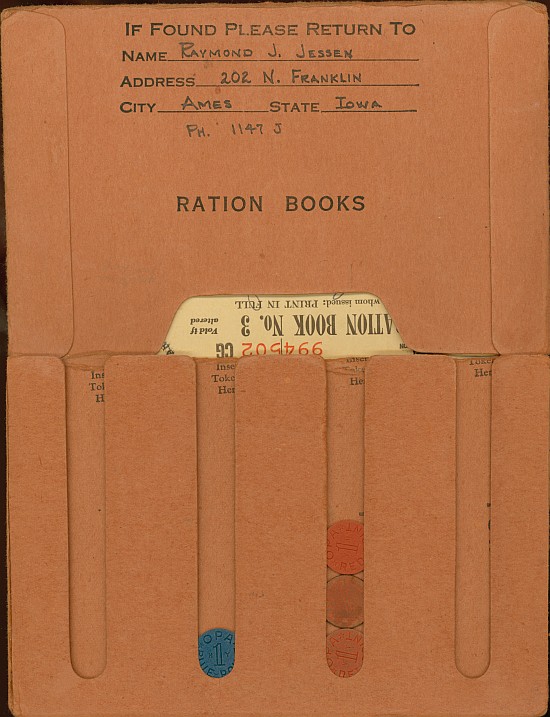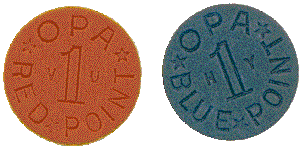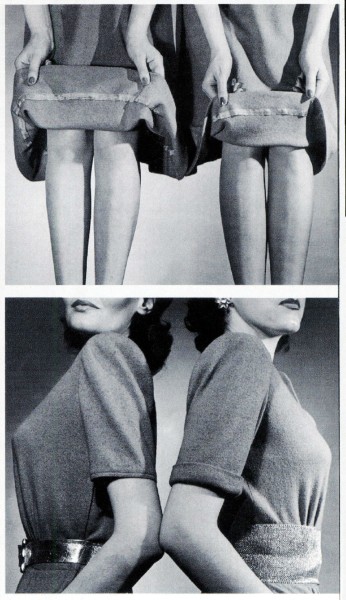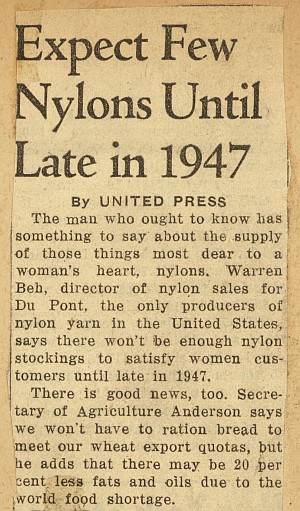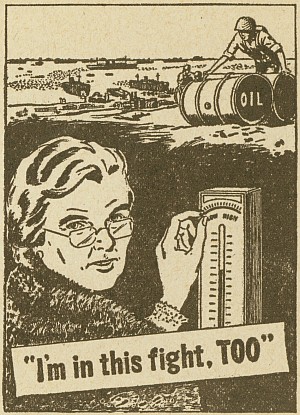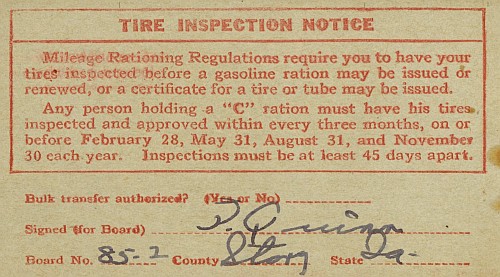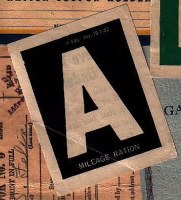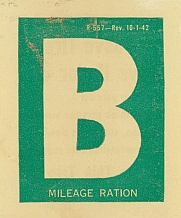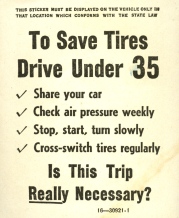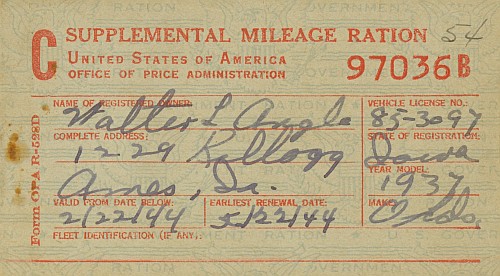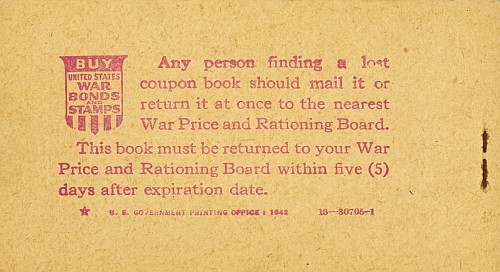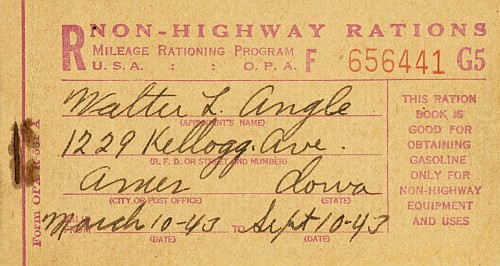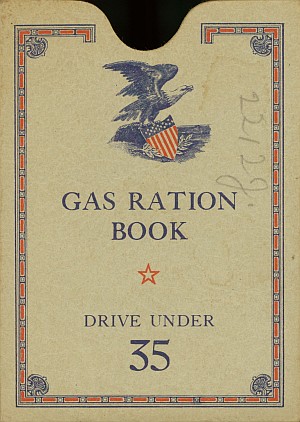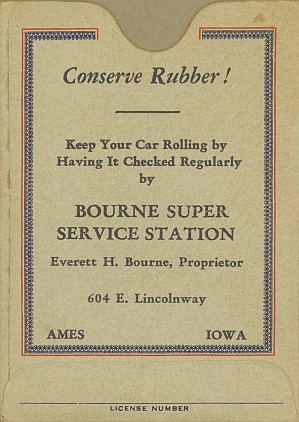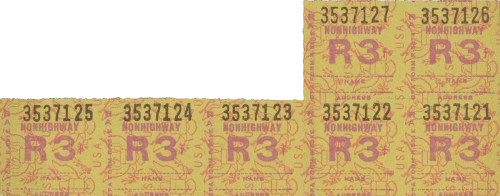There's a War on, You Know
During the Second World War, you couldn't just walk into a shop and buy as much sugar or butter or meat as you wanted, nor could you fill up your car with gasoline whenever you liked. All these things were rationed, which meant you were only allowed to buy a small amount (even if you could afford more). The government introduced rationing because certain things were in short supply during the war, and rationing was the only way to make sure everyone got their fair share
The Japanese attack on Pearl Harbor dramatically ended the debate over America's entrance into the war that raged around the world. As eager volunteers flooded local draft board offices ordinary citizens soon felt the impact of the war. Almost overnight the economy shifted to war production. Consumer goods now took a back seat to military production as nationwide rationing began almost immediately. In May of 1942, the U.S. Office of Price Administration (OPA) froze prices on practically all everyday goods, starting with sugar and coffee.
War ration books and tokens were issued to each American family, dictating how much gasoline, tires, sugar, meat, silk, shoes, nylon and other items any one person could buy. View a listing of all rationed items. Across the country 8000 rationing boards were created to administer these restrictions. The 1943 Sears, Roebuck and Co. catalog contains a list of all rationed farm equipment and tells the reasons and benefits of rationing as well as who is eligible. Even chicken wire fencing was rationed. A wartime edition of the American Woman's Cook Book contained revised recipes and gave advice on dealing with food shortages.
Types of rationing included: Uniform coupon rationing (sugar is an example) provided equal shares of a single commodity to all consumers; Point rationing provided equivalent shares of commodities by coupons issued for points which could be spent for any combination of items in the group (processed foods, meats, fats, cheese); Differential coupon rationing provided shares of a single product according to varying needs (gasoline, fuel oil); and Certificate rationing allowed individuals products only after an application demonstrated need (tires, cars, stoves, typewriters).
Ration coins (introduced in 1944) allowed
retailers to give change back for food
bought with ration stamps.
Read Coin World's description of
ration tokens
Above is a 1946 announcement concerning the availability of nylon stockings following the war.
Uncle Sam last week assumed the role of fashion designer. Sweeping restrictions aim to save 15 percent of the yardage now used on women's and girls' apparel through such measures as restricting hems and belts to two inches, eliminating cuffs on sleeves. Exempt categories include bridal gowns, maternity dresses, vestments for religious orders. - Life Magazine, April 20, 1942
The first nonfood item rationed was rubber. The Japanese had seized plantations in the Dutch East Indies that produced 90% of America's raw rubber. President Roosevelt called on citizens to help by contributing scrap rubber to be recycled, old tires, old rubber raincoats, garden hose, rubber shoes, bathing caps.
The following is from An Emergency Statement to the People of the United States published by the U.S. War Production Board in the Des Moines Register on April 20, 1942.
The steel industry has been rapidly stepping up its production..., but we need to get production up to the industry's full capacity of 90,000,000 tons - a total equal to the output of the rest of the world combined. This volume of production cannot be attained or increased unlesss an additional 6,000,000 tons of scrap iron and steel is obtained promptly. We are faced with the fact that some steel furnaces have been allowed to cool down and that many of them are operating from day to day and hand to mouth, due only to the lack of scrap.
The rubber situation is also critical. In spite of the recent rubber drive, there is a continuing need for large quantities of scrap rubber. We are collecting every possible pound from the factories, arsenals and shipyards; we are speeding up the flow of material from automobile graveyards; we are tearing up abondoned railroad tracks and bridges, but unless we dig out an additional 6,000,000 tons of steel and great quantities of rubber, copper, brass, zinc and tin, our boys may not get all the fighting weapons they need in time... Even one old shovel will help make 4 hand grenades. View a copy of the actual emergency statement
There were heart-tugging reminders urging
participation in the war effort for those still
on the home front.
The OPA established the Idle Tire Purchase Plan, and could deny mileage rations to anyone owning passenger tires not in use. Voluntary gas rationing proved ineffective and by the spring of 1942 mandatory rationing was needed. To get your classification and ration stamps, you had to certify to a local board that you needed gas and owned no more than five tires
By the end of 1942, half of U.S automobiles were issued an 'A' sticker which allowed 4 gallons of fuel per week. That sticker was issued to owners whose use of their cars was nonessential. Hand the pump jockey your Mileage Ration Book coupons and cash, and she (yes, female service station attendants because the guys were over there) could sell you three or four gallons a week, no more. For nearly a year, A-stickered cars were not to be driven for pleasure at all.
The green 'B' sticker was for driving deemed essential to the war effort; industrial war workers, for example, could purchase eight gallons a week. Red 'C' stickers indicated physicians, ministers, mail carriers and railroad workers. 'T' was for truckers, and the rare 'X' sticker went to members of Congress and other VIPs. Truckers supplying the population with supplies had a T sticker for unlimited amounts of fuel.
Since a gas ration sticker was affixed to a vehicle's glass windshield, the reverse side was visible to the occupants. This offered the opportunity to give advice to the driver and passengers.
Is this trip really necessary? Share your car. To save tires, drive under 35.
Ration Booklet for 'C' stamps
The national maximum Victory Speed was 35 miles an hour, and driving clubs or carpools were encouraged. The main idea was to conserve rubber, not gasoline. The interior side of the sticker issued for the car's windshield instructed the driver on this point. Every citizen, military or civilian, was to do their part. Even in the popular Warner Brothers cartoons, Daffy Duck exhorts the audience to Keep it under 40! Bugs Bunny's plunging airplane halts just before impact, out of gas as a consequence of the `A' sticker on its windshield.
The 'R' sticker was for non-highway vehicles, such as farm tractors
